
Did you know? Pickleball is one of the fastest-growing sports in India, with over 15,000 active players and more than 150 dedicated courts in cities like Mumbai, Bangalore, Delhi, and Pune. The All India Pickleball Association (AIPA) is driving this momentum, hosting national tournaments and making India a rising force in the global pickleball community. 🌍🔥
But India isn’t alone—in the U.S., pickleball has exploded in popularity, with over 36.5 million players in 2023, growing at a rate of 158% in the past three years, according to the Sports & Fitness Industry Association (SFIA). The sport is now backed by big investors, professional leagues, and even top athletes like LeBron James
Why should you care? Whether you’re looking for a fun fitness activity, an exciting social sport, or a competitive challenge, learning how to play pickleball can be your gateway to an engaging and healthy lifestyle. Unlike tennis or badminton, pickleball is easy to learn, requires minimal equipment, and can be played on modified tennis courts, making it highly accessible across India.
💡 What’s in it for you? In this guide, you’ll discover everything you need to start playing pickleball as a beginner—from rules and scoring to essential techniques for singles and doubles. By the end, you’ll be ready to step onto the court, serve like a pro, and enjoy this thrilling game with friends, family, or even in local tournaments. Let’s get started!
How to Play Pickleball for Beginners: Court, Equipment and Setup
Before you step onto the court, understanding the basics of pickleball is crucial. Whether you’re a beginner or an aspiring competitive player, knowing the court dimensions, essential equipment, and proper game setup will help you start with confidence.
Pickleball Court: Dimensions and Layout
Pickleball is played on a 20 x 44 feet court, the same size as a doubles badminton court. The court is divided into key sections that dictate the flow of the game:
- Baseline – The back boundary where players stand while serving.
- Sidelines – The outermost boundaries of the court.
- Service Boxes – Divided into left and right sections where the serve must land.
- Non-Volley Zone (The Kitchen) – A 7-foot area near the net where players cannot volley (hit the ball in the air before it bounces).
- Net Height – 36 inches at the posts, 34 inches at the centre, slightly lower than a tennis net.
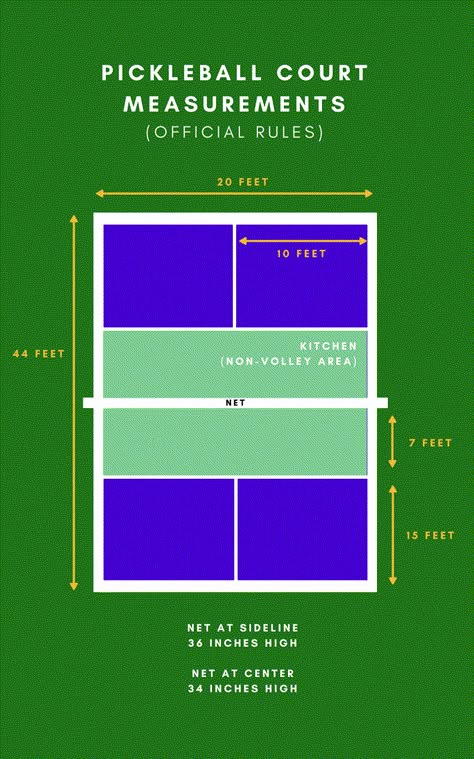
Why is the court smaller than a tennis court?
The compact size allows for quicker reactions, faster rallies, and an engaging playing experience, making it great for players of all ages.
Pickleball Equipment: What You Need to Play
If you’re wondering, “What is all the equipment you must have to play pickleball?”, here’s a complete and accurate list based on official guidelines and expert recommendations.
✅ Pickleball Paddle
- Pickleball paddles are 16 inches long and 8 inches wide on average, making them smaller than tennis rackets but larger than table tennis paddles.
- The material used can be: –
- Wood – Cheapest but heaviest option; best for casual play.
- Composite – A mix of fiberglass and polymer core; offers a balance of power and control.
- Graphite – Lightweight and highly responsive; preferred by advanced players for precision.
- Paddles typically weigh 6-14 ounces. Lighter paddles provide better control, while heavier paddles offer more power.
✅ Pickleball Ball
- Material: Durable plastic with perforations (holes) to control airflow.
- Outdoor Pickleballs:
- 40 smaller holes for wind resistance.
- Made of harder plastic, making them durable for rough surfaces.
- Examples: Dura Fast 40, Franklin X-40, Onix Fuse G2.
- Indoor Pickleballs:
- 26 larger holes for better control and softer bounce.
- Lighter and quieter, reducing impact noise.
- Examples: Jugs Pickleball, Onix Pure 2, Franklin X-26.
✅ Court Shoes (Non-Marking, High Grip Sole)
- Why They Matter: Pickleball involves quick lateral movements, requiring proper grip and ankle support.
- Best Options:
- Tennis or indoor court shoes with non-marking soles.
- Look for herringbone tread patterns for excellent grip.
- Avoid: Running shoes, as they lack lateral stability, increasing the risk of injury.
✅ Pickleball Net
- Standard Net Height:
- 36 inches at the sides, 34 inches at the center (lower than a tennis net).
- Portable vs. Permanent Nets:
- Permanent nets are used on dedicated courts.
- Portable nets (like the Franklin Sports Pickleball Net) allow for setup on tennis courts, driveways, or gyms.
✅ Additional Gear for Comfort & Performance
- Wristbands & Headbands: Keep sweat off your hands and face during long rallies.
- Paddle Overgrip: Helps enhance grip, absorb sweat, and improve paddle control.
- Compression Sleeves & Knee Support: Useful for extra joint support.
- Breathable Athletic Wear: Dri-fit or moisture-wicking sportswear for comfort in hot weather.
By choosing the right paddle, ball, shoes, and accessories, you’ll enhance your performance, reduce injury risks, and enjoy a better playing experience. Now that you have the gear, let’s move on to setting up your pickleball game!
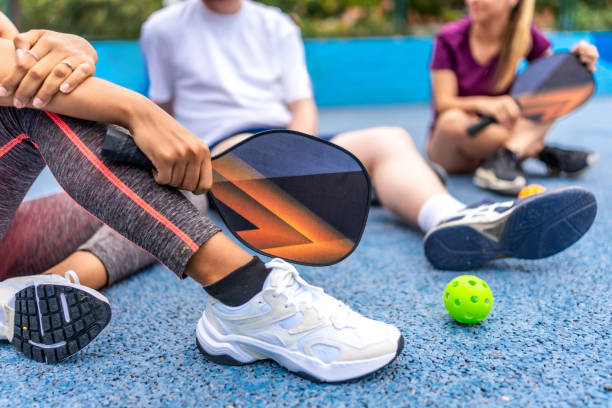
Setting Up a Pickleball Game: Everything You Need to Know
Now that you have your equipment and court, it’s time to set up your game the right way. Whether you’re playing competitively or just for fun, understanding the game format and court setup options will ensure a smooth and enjoyable match.
Step 1: Choose Your Playing Format
Pickleball offers multiple game formats, each catering to different skill levels, strategies, and player counts.
- Singles (1 vs. 1): If you enjoy a fast-paced, physically demanding game, singles is your best bet. Since there’s only one player per side, you’ll cover the entire court alone, requiring quick reflexes, stamina, and strong shot placement. Perfect for players who love a challenge!
- Doubles (2 vs. 2): The most popular format of pickleball, doubles is all about teamwork, communication, and strategy. Since you’re covering half the court, it’s easier on the legs but requires coordinated movement and smart positioning with your partner. It’s the best choice for beginners and those who enjoy a social aspect to the game.
- Skinny Singles: Looking to sharpen your accuracy and court awareness? Try skinny singles, a one-on-one format where you only use half the court. This is a great way to practice shot precision and improve control while keeping the rallies intense.
Each format offers a unique playing experience, so choose the one that fits your style and fitness level!
Step 2: Court Setup Options
Whether you’re playing at a club, repurposing a tennis court, or setting up a game at home, you can easily adapt your environment to fit a pickleball-ready layout.
- Playing on a Dedicated Pickleball Court: If you’re at a pickleball facility or sports club, the court is already marked and net height is adjusted, meaning you can jump straight into the game. These courts offer the best playing experience, especially for serious players.
- Converting a Tennis Court: If you don’t have access to a dedicated pickleball court, you can easily convert a tennis court into one. Use temporary boundary tape or chalk to mark pickleball court lines, and set up a portable pickleball net (since a tennis net is higher than a pickleball net). This is a great option for public spaces and community games!
- Backyard, Driveway, or Gym Setup: Want to play at home? If you have a flat, open space, you can create a pickleball court in your backyard, driveway, or even indoors using tape or chalk to mark the boundaries. A portable net allows for easy setup and storage. This is a fun and casual way to practice your game without needing a professional court.
Wherever you play, setting up your game properly ensures a fair, competitive, and exciting match. Now that your court is ready, let’s move on to the next step: understanding the rules and scoring system!
How to Score in Pickleball: Scoring System & Gameplay Flow 🏓📊
Scoring in pickleball follows a unique structure, and understanding it is crucial for winning games. Whether you’re playing singles or doubles, the way you score points, rotate positions, and serve differs. Below, we’ll break it down into clear sections with small headings for readability and a comparison table to make singles vs. doubles scoring easy to understand.
Scoring Rules: Rule 1-4
🔹 RULE #1: Only the Serving Team Can Score
✅ In pickleball, only the team or player serving can score points.
✅ If the receiving team wins the rally, they don’t score but gain the serve.
🔹 RULE #2: Games Are Played to 11, 15, or 21 Points
✅ Most recreational games are played to 11 points.
✅ In tournament play, games may go to 15 or 21 points.
✅ A team must win by at least 2 points (e.g., 11-9 wins, but 11-10 does not).
🔹 RULE #3: No Second Chances on Serves
✅ Unlike tennis, pickleball does not allow a second serve if the first attempt is a fault.
✅ This rule keeps the game fast-paced and prevents excessive delays.
RULE #4: The 10-Second Rule in Pickleball ⏳
A common query among beginners is what is the 10 second rule in pickleball?
The 10-second rule ensures that games stay fast-paced and fair.
✅ Once the referee or server calls out the score, the server has 10 seconds to serve.
✅ If the server fails to serve within 10 seconds, it results in a fault.
✅ This rule prevents unnecessary delays and ensures smooth gameplay.
💡 Pro Tip: Always be ready to serve immediately after announcing the score to avoid faults.
Pickleball Scoring Rules: Singles vs. Doubles (Comparison Table)
| Factor | Singles Scoring 🏓 | Doubles Scoring 🏓🏓 |
| Who Can Score? | Only the server can score points. | Only the serving team can score points. |
| Serving Rotation | The server switches sides after winning a point. | The first server starts from the right. If they win, they switch sides. |
| Losing the Serve | If the server loses a rally, the opponent gains the serve. | If the first server loses the serve, the partner gets the next serve. If both lose, the serve goes to the opposing team. |
| Number of Serves Per Team | Only one serve per turn. | Both players on a team get a chance to serve before losing the serve. |
| Serve Position Based on Score | If the server’s score is even, they serve from the right side. If odd, they serve from the left side. | The first server always serves from the right side. Players switch sides after scoring points. |
| How to Announce the Score | Call out: [Your score] – [Opponent’s score] (e.g., 4-2). | Call out: [Your score] – [Opponent’s score] – [Server number] (e.g., 6-4-1). |
| Example | Score: 5-2 → Server moves to the left side and serves diagonally. | Score: 6-4-1 → First server loses the serve. The second server takes over, and the call changes to 6-4-2. |
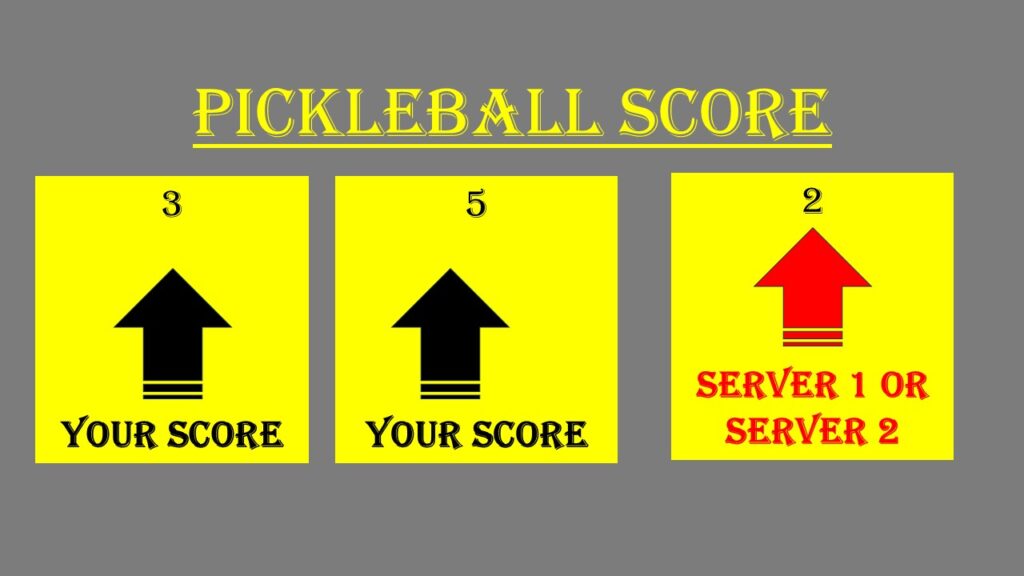
PICKLEBALLMOTIVATION.COM
How to Serve in Pickleball: Serving Rules & Techniques
Serving is the starting point of every pickleball rally, and a well-placed serve can set the tone for the entire game. Whether you’re playing singles or doubles, knowing how to serve in pickleball correctly is essential. In this section, we’ll cover serving rules, common faults, and advanced strategies to help you improve your game.
Pickleball Serving Rules: Rule 5-8
Pickleball has a few simple but strict rules for serving:
- RULE #5: The serve must be underhand, with the paddle moving in an upward motion.
- RULE #6: The ball must be struck below the waist (navel level).
- RULE #7 :The serve must land diagonally in the opponent’s service box.
- RULE #8 :The server must stand behind the baseline and not step inside the court until after the ball is struck.
Every rally starts with a good serve, so mastering the technique is key.
Pickleball Serving Rules: Singles vs. Doubles (Comparison Table)
| Factor | Singles 🏓 (1 vs. 1) | Doubles 🏓🏓 (2 vs. 2) |
| Starting Position | Server starts on the right side of the court. | First server starts on the right side of the court. |
| Serving Rotation | Server switches sides after winning a point (right to left, left to right). | Only the serving team switches sides after scoring. |
| Number of Serves Per Team | Only one serve per turn (if lost, opponent gets the serve). | Both players on the team get a chance to serve before the serve is lost to the opposing team. |
| Scoring System | The server can only score points on their serve. | Only the serving team can score points. |
| When to Switch Sides | The server switches sides after winning a point. The receiver stays in place. | Players do not switch sides unless they score a point. |
| Serve Position Based on Score | If the server’s score is even, they serve from the right side; if odd, they serve from the left side. | The first server serves from the right. After winning a point, the server and their partner switch sides. |
| Losing the Serve | If the server loses the rally, the opponent gains the serve. | If the first server loses the serve, their partner gets the next serve. When both servers lose their serve, it switches to the opposing team. |
| Server Callout | The server announces the score before serving (e.g., 4-3). | The server announces three numbers: [Your score] – [Opponent’s score] – [Server number] (e.g., 6-4-2). |
Common Serving Faults to Avoid
A fault in serving immediately results in a loss of serve or a switch to the second server in doubles. Here’s what you need to avoid:
- ❌ Ball lands outside the service box – If the serve is out, it’s a fault.
- ❌ Serve hits the net and doesn’t land in the correct area – This is not a “let” serve like in tennis; it’s a fault.
- ❌ Overhand or sidearm serve – The serve must be made underhand with an upward motion.
- ❌ Foot fault – If the server’s foot touches or crosses the baseline before contact, it’s a fault.
Pickleball Serving Strategy & Techniques
A great serve sets the tone for the rally. Whether you’re playing singles or doubles, having a strong serving strategy can give you a significant advantage. Once you master the basic serve, these techniques will elevate your game and keep opponents off balance.
| Technique | How It Works | Best For |
| 🔥 Power Serve | A fast, hard-hit serve that forces a weak return. | Singles & Doubles – Aggressive playstyle. |
| 🎯 Deep Serve | Lands near the opponent’s baseline, limiting their options. | Both – Prevents strong returns. |
| 🔄 Spin Serve | Adds topspin or sidespin, making the ball curve or bounce unpredictably. | Doubles – Difficult for opponents to read. |
| 🎭 Soft, Short Serve | A slow serve that barely clears the net, forcing opponents to rush forward. | Singles – Disrupts opponent’s positioning. |
| 🎯 Angle Serve | A wide serve that pulls the receiver off the court, leaving space open. | Doubles – Opens up gaps in the defense. |
How to Play Pickleball Singles: A Game of Endurance & Precision
Playing singles pickleball is all about speed, court coverage, and shot placement. Since you’re covering the entire court alone, every step you take must be calculated.
- ✅ Stay near the centerline – This gives you equal access to both sides of the court.
- ✅ Use deep serves & returns – Keep your opponent pinned at the baseline to limit their attack options.
- ✅ Move in a “V” pattern – Sprint forward for drop shots, retreat for deep returns, and always reset to the middle.
- ✅ Master the third shot drop – A soft shot into the kitchen neutralizes aggressive opponents and helps you move forward.
- ✅ Conserve energy – Instead of chasing every ball, focus on forcing errors from your opponent through placement and control.
💡 Beginner Tip: Play “Skinny Singles” (using only half the court per rally) to improve your shot accuracy and positioning before transitioning to full-court singles.
How to Play Pickleball Doubles: Teamwork & Strategy Over Power
Doubles pickleball is less about speed and more about coordination. You and your partner must work as a unit, covering the court efficiently while setting up winning shots.
- ✅ Stay side-by-side with your partner – Avoid leaving open gaps by keeping a balanced formation.
- ✅ Decide who takes the middle shots – Miscommunication leads to easy points for your opponents.
- ✅ Use dinking to control the net – Instead of smashing, play soft shots over the net to force longer rallies and mistakes.
- ✅ Stacking strategy – More advanced teams adjust their positions so their strongest player always stays in their preferred court side (especially in mixed doubles).
- ✅ Target the weaker player – If one opponent struggles with returns, direct more serves and shots their way.
💡 Beginner Tip: Talk to your partner! Calling out shots and positioning yourself smartly can make even two beginners feel like a well-oiled team.
How to Avoid Errors in Pickleball: Common Mistakes & Pro Tips🏓🚫
Even beginners can quickly improve their game by avoiding common mistakes. Let’s break down the most frequent errors and how to fix them so you can play smarter and win more rallies.
| Mistake 🤦♂️ | What Goes Wrong? ❌ | How to Fix It ✅ |
| Poor Footwork & Positioning 🚶♂️ | Staying too far back or moving too slow to the net. | Move forward quickly after serving. Keep knees bent and be ready to adjust. |
| Stepping Into the Kitchen 🏡🚫 | Volleying inside the non-volley zone, leading to faults. | Stay behind the kitchen line unless the ball bounces first. |
| Overhitting & Lack of Control 💥🎯 | Hitting too hard, leading to errors. | Focus on placement over power. Use soft dinks at the net. Aim downward on smashes. |
| Weak Serve & Return 🎾⚠️ | Serving too short or returning to the opponent’s paddle. | Serve deep to the baseline. Return high and deep to push opponents back. |
| Miscommunication in Doubles 🗣️🔄 | Both players going for the same shot or leaving gaps. | Call “Mine!” or “Yours!”. Stay side by side with your partner. |
Learn How to Play Pickleball in Different Settings: Adapting to Any Court & Group Size
Pickleball is a versatile sport that can be played almost anywhere with a flat surface and a net. Whether you’re using a tennis court, playing with three players, or setting up a game in a backyard, you can easily adapt the game to fit your space and group size. Let’s explore how.
🏓 How to Play Pickleball on a Tennis Court
If you don’t have access to a dedicated pickleball court, you can modify a tennis court with a few simple adjustments.
Steps to Convert a Tennis Court for Pickleball:
- ✅ Lower the net – A pickleball net is 34 inches at the center, while a tennis net is 36 inches high. If possible, adjust it or use a temporary pickleball net.
- ✅ Mark the pickleball court boundaries – Use chalk, tape, or temporary court lines to outline a 20 x 44-foot pickleball court within the tennis court.
- ✅ Set up multiple courts – A standard tennis court can fit up to four pickleball courts, making it great for group play.
- ✅ Follow standard pickleball rules – The game is played the same way, but the extra court space can sometimes make it challenging for retrieving shots.
💡 Pro Tip: If playing on an unmarked tennis court, use cones or throw-down markers to help define the pickleball boundaries.
🏓 How to Play Pickleball with 3 Players
Pickleball is typically played as singles (1v1) or doubles (2v2), but what if you only have three players? You can still enjoy a competitive game by using one of these variations:
Canadian Doubles (1 vs. 2 Format)
- The single player covers the entire court, while the team of two covers their half side by side.
- The single player serves every time, and points are scored the same way as regular doubles.
- To balance the challenge, the solo player can have an extra serve or be allowed to hit into a slightly larger area.
Rotational Play
- Each player rotates in after a certain number of points (e.g., after every 5 points).
- This allows all three players to practice different roles, making it great for skill-building.
Skinny Singles (Half-Court Play)
- Instead of using the full court, players only play on one side of the centerline.
- Each rally, the third player takes turns rotating in, keeping the game fast and competitive.
💡 Pro Tip: If one player is significantly stronger, they can play solo against two weaker players to keep the game balanced.
Final Thoughts: Get Ready to Play Pickleball!
Pickleball is more than just a sport—it’s a fun, fast-paced game that anyone can enjoy, whether you’re playing for fitness, competition, or social bonding. By understanding the court setup, rules, serving techniques, and strategies, you’ll be well-equipped to step onto the court with confidence.
Now it’s your turn! Find a local pickleball court, grab a paddle, and start playing today. Whether you’re a beginner or an aspiring competitor, the best way to improve is to get on the court and have fun!
📢 Want to learn more? Stay tuned for more pickleball tips, strategies, and gear recommendations right here on our blog. If you’ve played pickleball before, share your experience in the comments below!

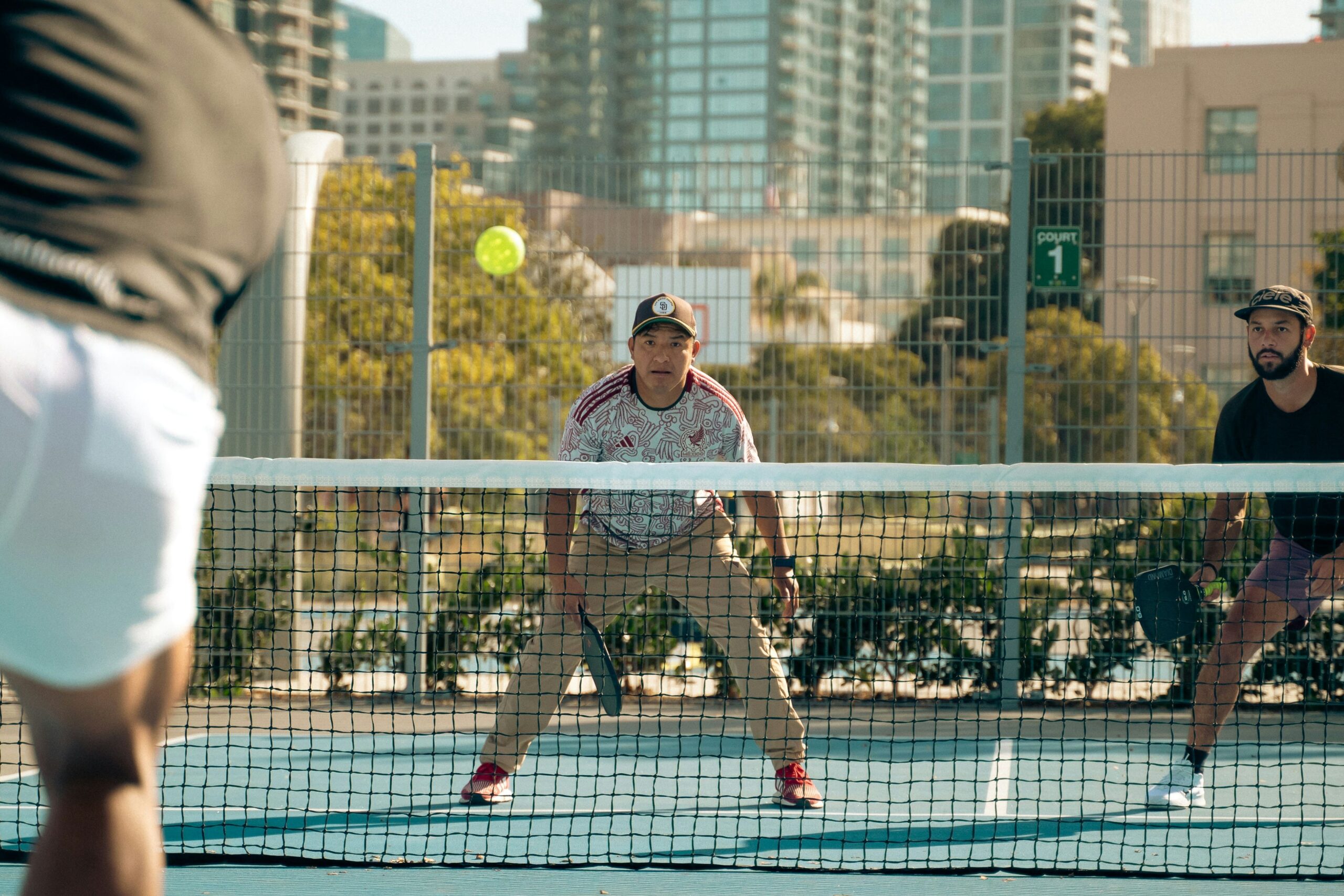
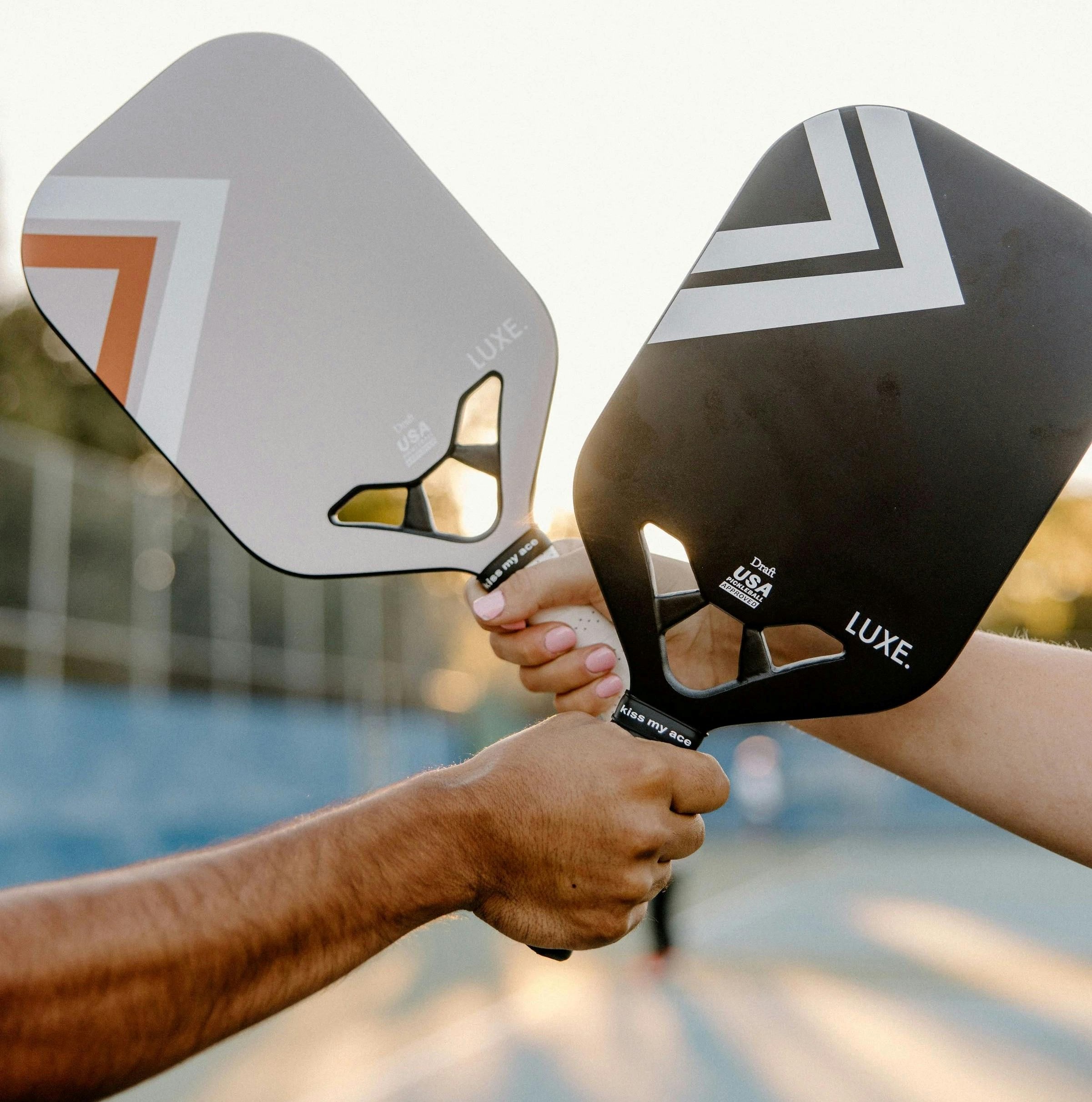
Pingback: What Is Pickleball? The Thrilling Game Sweeping Across India